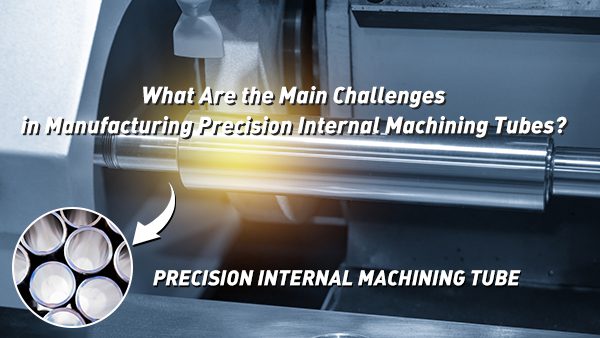What Are the Main Challenges in Manufacturing Precision Internal Machining Tubes?
Manufacturing precision internal machining tubes is an intricate process that requires careful attention to detail, advanced technology, and skilled expertise. These tubes are crucial components in industries such as aerospace, automotive, and medical devices, where precision and quality are essential. But what makes the manufacturing of these tubes so challenging? Let’s explore the world of precision tubing and delve into the hurdles that manufacturers face.
Introduction to Precision Internal Machining Tubes
Overview of Precision Tubing
Precision tubing refers to the creation of tubes with extremely tight tolerances and specific dimensions. These tubes are used in applications where precision is non-negotiable, such as in medical instruments, aircraft, and precision engineering projects. The ability to maintain uniformity and accuracy in these tubes is critical to the performance of the final product.
Importance of High-Precision Tubular Components
High-precision tubular components are crucial for ensuring the efficiency and reliability of complex systems. In sectors like aerospace, even the slightest deviation in a tube’s dimensions can lead to significant performance issues. Thus, maintaining high precision is not just about meeting standards; it’s about ensuring safety and functionality.
Key Challenges in Manufacturing
Material Selection for CNC Tube Machining
One of the first challenges manufacturers face is selecting the right material. The choice between metals and plastics can significantly impact the machining process, affecting everything from tool wear to surface finish.
Metals vs. Plastics
Metals such as stainless steel and titanium offer strength and durability, making them suitable for demanding applications. However, they are harder to machine compared to plastics, which are easier to shape but may not offer the same strength and heat resistance. Choosing the right material involves balancing these factors based on the intended use of the tube.
Maintaining Dimensional Accuracy
Achieving and maintaining dimensional accuracy is perhaps the biggest challenge in CNC tube machining. The precision required is often within microns, and achieving this level of accuracy consistently demands advanced technology and skilled operators.
The Role of Tube Boring and Reaming
Tube boring and reaming are critical processes in ensuring the internal dimensions of a tube meet the required specifications. These techniques must be performed with precision to avoid dimensional errors that can compromise the tube’s performance.
Surface Finish Quality
The quality of the surface finish is crucial for the performance of machined tubular parts, particularly in applications where fluid flow or pressure is involved. A smooth, defect-free surface minimizes friction and wear, enhancing the tube’s functionality and lifespan.
Precision Honing Techniques
Precision honing is used to improve the surface finish of the internal tube walls. This process involves using abrasive stones to remove microscopic amounts of material, resulting in a highly polished and accurate surface. However, it requires precise control to achieve the desired outcome without over-machining.
Tool Wear and Maintenance
Tool wear is an inevitable part of the machining process, and managing it is essential to maintain quality and efficiency. Regular maintenance and timely replacement of tools are necessary to prevent defects in the final product. This requires a well-planned maintenance schedule and investment in high-quality tools.
Managing Production Costs
Manufacturing precision internal machining tubes is an expensive process, involving high costs for materials, tools, and labor. Balancing these costs while maintaining quality is a constant challenge for manufacturers. Efficient production techniques and careful resource management are crucial for cost control.
Advanced Techniques in Precision Engineering
Custom Tube Machining Solutions
Custom tube machining allows manufacturers to tailor tubes to specific applications, meeting unique requirements that standard tubes cannot. This involves advanced CNC programming and the ability to adapt to varying designs and specifications, making it a complex but rewarding challenge.
Innovations in CNC Tube Machining
Technological advancements in CNC machining have led to improved precision and efficiency in tube manufacturing. Innovations such as real-time monitoring, automated adjustments, and advanced simulation software help manufacturers overcome some of the traditional challenges associated with precision internal machining.
The challenges in manufacturing precision internal machining tubes are numerous and complex, requiring a deep understanding of materials, processes, and technology. From selecting the right materials to ensuring dimensional accuracy and managing costs, each step in the process is critical to the success of the final product. Despite these challenges, advances in technology and techniques continue to push the boundaries of what is possible, enabling the production of even more precise and reliable tubular components.


